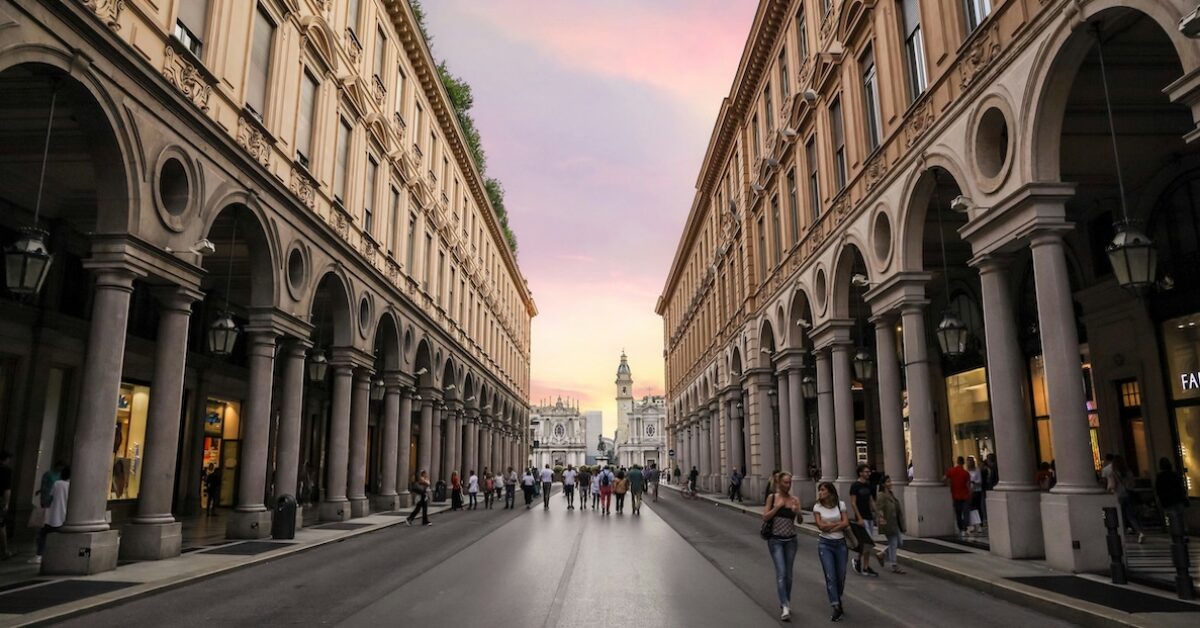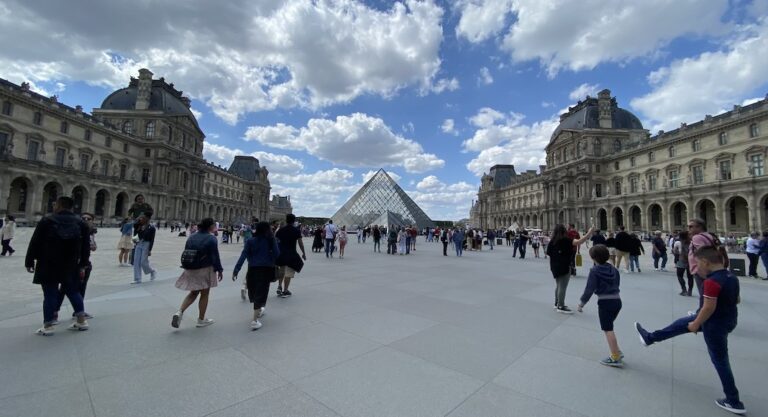Turin. The city defies simple description – a captivating blend of French elegance and unmistakably Italian charm. Just take its signature bicerin coffee, a tantalizing concoction of chocolate, espresso, and velvety cream, which encapsulates the complexity of Turin in a single sip.
Wedged in northwestern Italy, Turin finds itself cradled by the majestic Alps, and within easy reach of prominent French cities like Nice, Lyon, and Annecy. Despite its Piedmontese location, boasting both nearby beachfront access and mountain vistas, Turin exudes a distinctly French vibe. Its predominantly Baroque architecture and gallery-lined promenades evoke a sense of being in the heart of France. From palatial châteaux, locally known as palazzo, to its culinary offerings, there’s an unmistakable feeling that France is just a stone’s throw away (30 miles away, to be precise). In fact, thanks to its proximity, Turin sees quite a significant influx of French tourists, further cementing its unique blend of Italian and French culture.
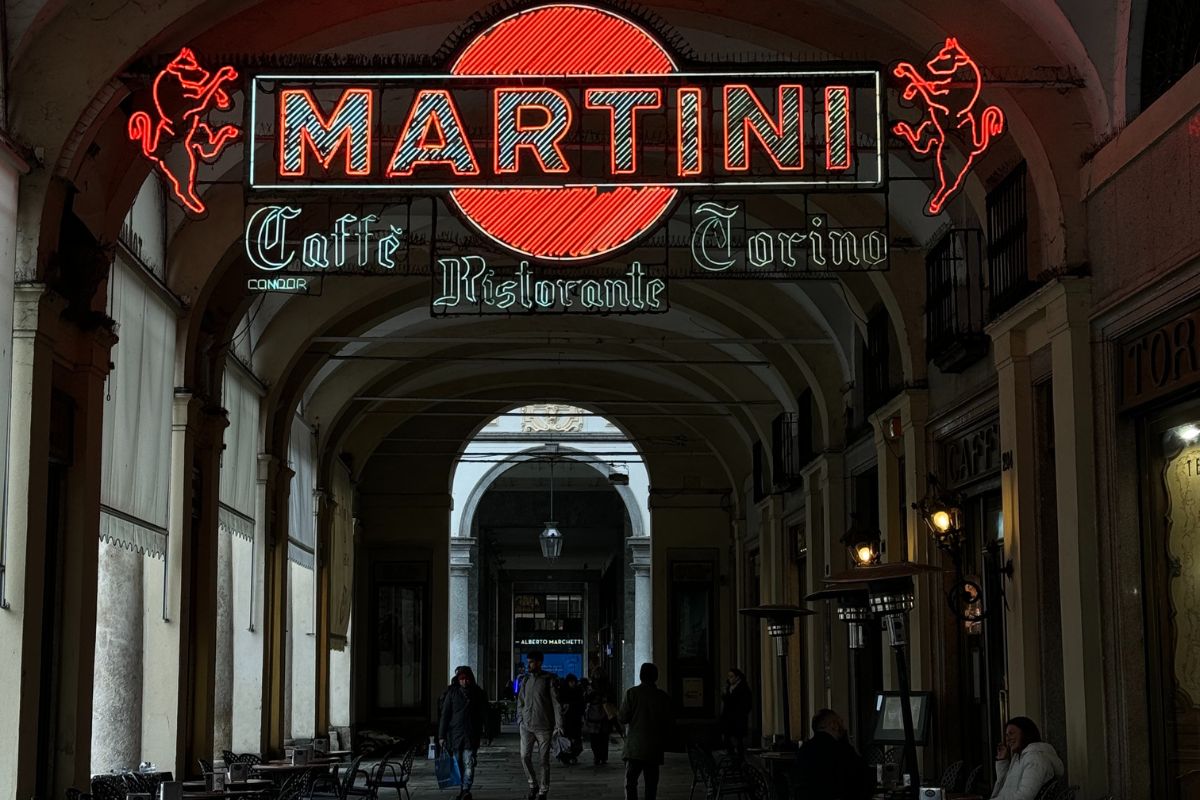
Steeped in a rich history intertwined with a vibrant industrial legacy, Turin is a reflection of Italian sophistication on an international scale, the birthplace of iconic brands like Lavazza and Eataly, automotive giants like Fiat, and bar staples like Martini & Rossi. Yet, amidst its dynamic commerciality, the city effortlessly embraces its complexities, from the decadence of Piedmontese cuisine to the enigmatic allure of wines from the nearby Langhe region. In a time when many Italian destinations feel overrun, Turin remains such a delight, offering a genuine taste of Italy (and an after flavor of France) in every aspect.
And yet, what is it about Turin that makes it feel like France’s long-lost lovechild?

Turin’s Historic French Ties
Turin’s French ties can be traced back to the House of Savoy, which once controlled the city. This is the house that lent its name to France’s Haute-Savoie region in the Alps of eastern France (where Chamonix-Mont-Blanc is located today), and Turin and the Haute-Savoie were indeed once united under the same rule. (In fact, Haute-Savoie has only been part of France since 1860!)
Following Rome’s decline in the 4th century, Turin was under the rule of various tribes before becoming part of the Lombard kingdom, and later the Frankish Empire. Its ties to the feudal County of Savoy (which covered much of Piedmont and Occitania) were solidified in 1046, when Countess Adelaide married Count Odo of Savoy. Despite a period of semi-independence and conflict, Turin acknowledged the County of Savoy in 1280. From then on, Turin was under the influence of the House of Savoy, eventually becoming integral to the expanding Duchy of Savoy. The Savoy family’s origins weren’t exclusively French; rather, they extended their domain and influence through strategic marriages and adept diplomacy on the international stage. Their lineage was rather a fusion of various neighboring regions and ethnicities.

Turin was then occupied by the French for a short time from 1536 to 1562. Following that, it ascended to the status of capital of the Duchy of Savoy in 1563 under Duke Emanuele Filiberto’s decree. This era marked a pivotal moment for the city. By the late 1700s and early 1800s, Turin emerged as one of Europe’s pioneers in adopting gas lighting systems (as you can still see in the city’s abundance of streetlights). The unification of Italy in 1861 elevated Turin to the status of the Kingdom of Italy’s capital—in fact, Italy’s original capital as we know it today. During the early 1900s, the founding of Fiat and Lancia turned Turin into an industrial powerhouse, while the inception of Ambrosio Film, Italy’s first film company, marked the city as a cinematic hub.
Throughout its history, Turin has faced sieges and occupations, notably during the War of the Spanish Succession, where it was besieged by the French in both 1640 and 1706, only to be defended and ultimately victorious under Eugene of Savoy’s leadership in 1706. Turin saw French occupation again during the Napoleonic Wars. This complicated course of events, which was quite common in Europe at the time, forms the French-tied heritage that the city boasts today.
Inspired by the French Court
Today, Turin could easily be the extension of the city of Versailles and the French court, with the Palazzo Madama exuding a royal flair—quite in contrast to the rest of Italy during the same epoch. Although there is some truth to it, Torinesi (Turin’s locals) can often be quoted as believing that Paris is just a modest copy of their city’s center. And indeed, some buildings in the city center do bear similarities with French architecture.
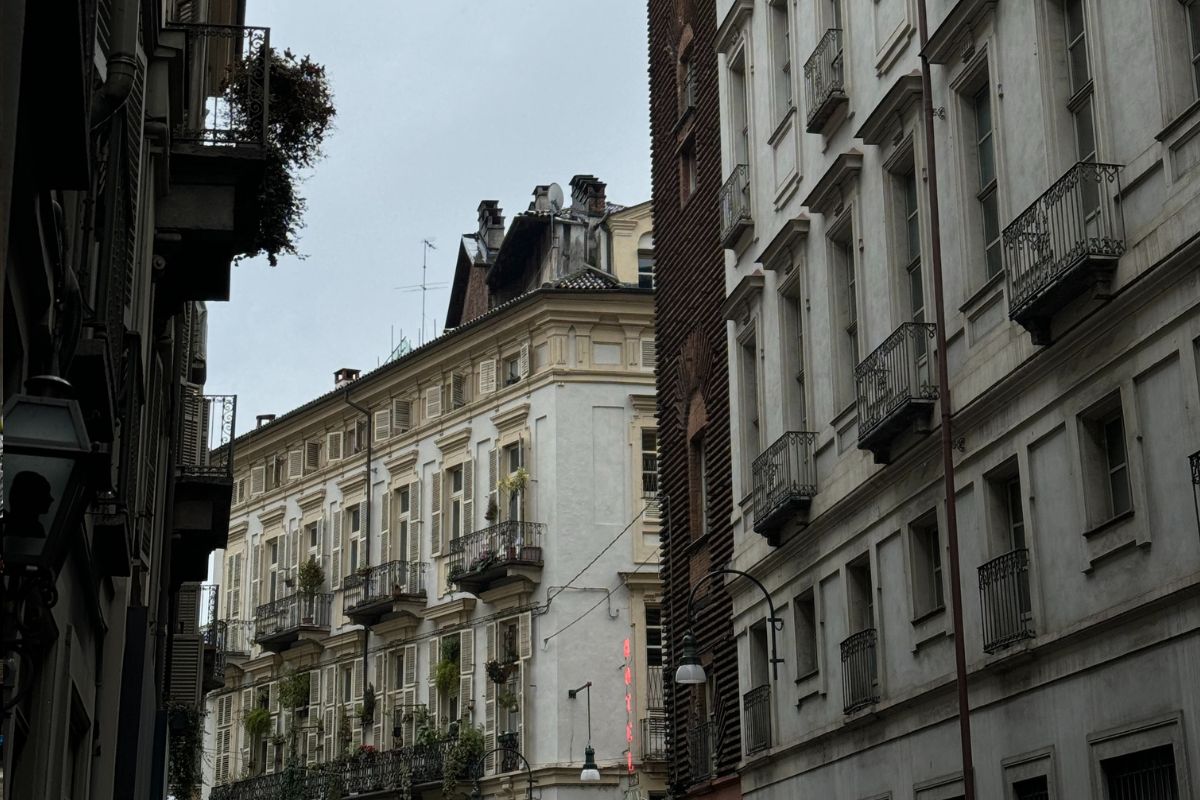
Nowhere is this evidence more striking than in Turin’s arcades. In Paris, they are known as “passages,” and in this former Italian capital, they highlight the glamor of the Art Nouveau architecture movement, which outlines the city’s picturesque and walkable center. Among Turin’s architectural gems, the covered passages stand out prominently. Three in particular—Subalpina, San Federico, and Umberto I—feature glass-ceilinged structures adorned with charming boutiques and cafés… and, of course, bookstalls (although not referred to as “bouquinistes” here) lining their pathways, reminiscent of those along the Seine.
Another notable structure is La Venaria Reale, the hunting retreat of the Savoy family just beyond the city limits. Remarkably, it bears a strong resemblance to a scaled-down version of Versailles, complete with its own Hall of Mirrors, which some argue may even surpass its French counterpart in splendor. The meticulously landscaped gardens (done in the formal Jardin Français style) and impeccably restored grounds further enhance its allure, making it a must-visit destination, free from the crowds and bustling tourist vans often associated with such attractions.

Local Dialect
Italian is the primary language in Turin, but the linguistic landscape reveals a richer tapestry. Historically, this region boasted a significant French-speaking population two centuries ago, alongside the predominant Piedmontese language and regional Italian dialects. (Meanwhile, neighboring Valle D’Aosta, influenced even more by the French language, has been recognized as a bilingual region since 1948.)
While French isn’t as prevalent in Turin today, many locals, particularly those in hospitality, speak the language. The local dialect exhibits softer vowels than standard Italian, showing a distinct French influence. French words also occasionally find their way into conversation in Turin, with words like “brioche” replacing “cornetto” for breakfast pastries, and “dehors” substituting for “fuori” for outside.
Piedmontese Cuisine — a French-Italian Bridge
Positioned as a culinary junction merging Italian and French influences, Piedmontese cuisine emerges as a gem that (some say) surpasses both in its exquisite flavor palette. Boasting cheeses, pastries, and culinary marvels, local dishes exude a refined richness, with a subtle French flair. Unlike the pasta-centric offerings we associate with Italy, Piedmontese cuisine showcases meat dishes adorned with exquisite sauces, presented in a sophisticated French style. While rooted in Italian culinary fundamentals, Piedmontese cuisine boasts a complexity reminiscent of French gastronomy, clear in its denser sauces and meticulous plating techniques.
For instance, the adored vitello tonnato (veal served in a mayo-like tuna sauce) seamlessly fuses Italian ingredients with French finesse. Another standout is the canard à l’orange (duck breast in orange sauce), which originated in Italy but is often more associated with France. Turin’s esteemed reputation as a truffle capital further enriches its culinary landscape, highlighting the mutual adoration for the delicacy shared between Italy and France. The region’s close proximity to France contributes to the prevalence of butter in Piedmontese cuisine, complementing the traditional use of olive oil. Additionally, it’s customary for meals to conclude with cheese, similar to the French dining tradition. Ultimately, the culinary interchange between Italy and France throughout history has undoubtedly influenced both cuisines across the board.
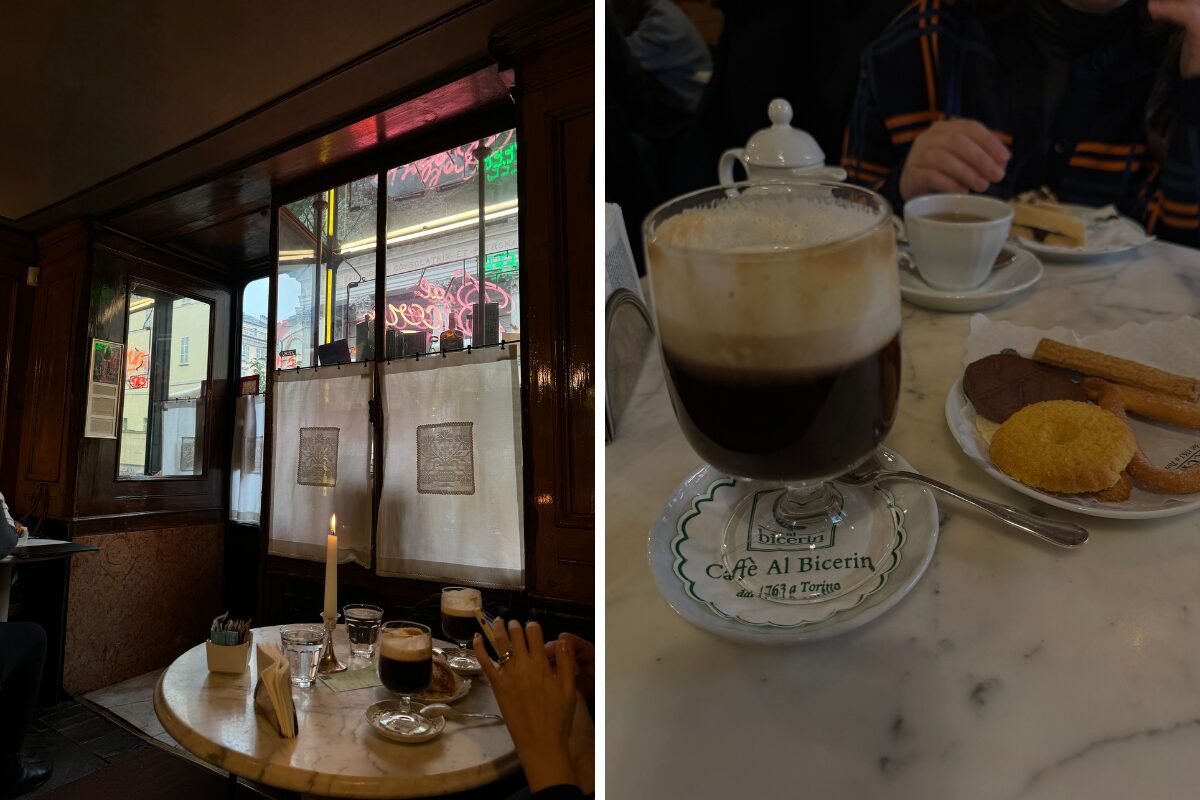
The ongoing debate surrounding the Mont Blanc dessert further underscores the interplay between Italian and French culinary legacies. While Angelina in Paris claims its invention, its Alpine namesake suggests Italian origins, with Turin proudly embracing it as its own. Supposedly, it was originally an Italian dessert from the late 15th century, and it only made its way to the other side of the Alps two centuries later, in the early 17th century.
An Alpine City
Finally, did you know that Turin is just 25 miles away from the peaks of the Alps? A Los Angeles Times article from the ’90s even calls it the Italian “town with a French mountain mentality.”
This might not sound as impressive until you actually spy the clear snowy mountaintops from the town center! Ascending into the Turin hills on clear days offers panoramic views of the city, nestled against the backdrop of majestic mountains. Few cities in the world rival the blend of urban life with stunning natural landscapes on the horizon, making Turin a true gem.
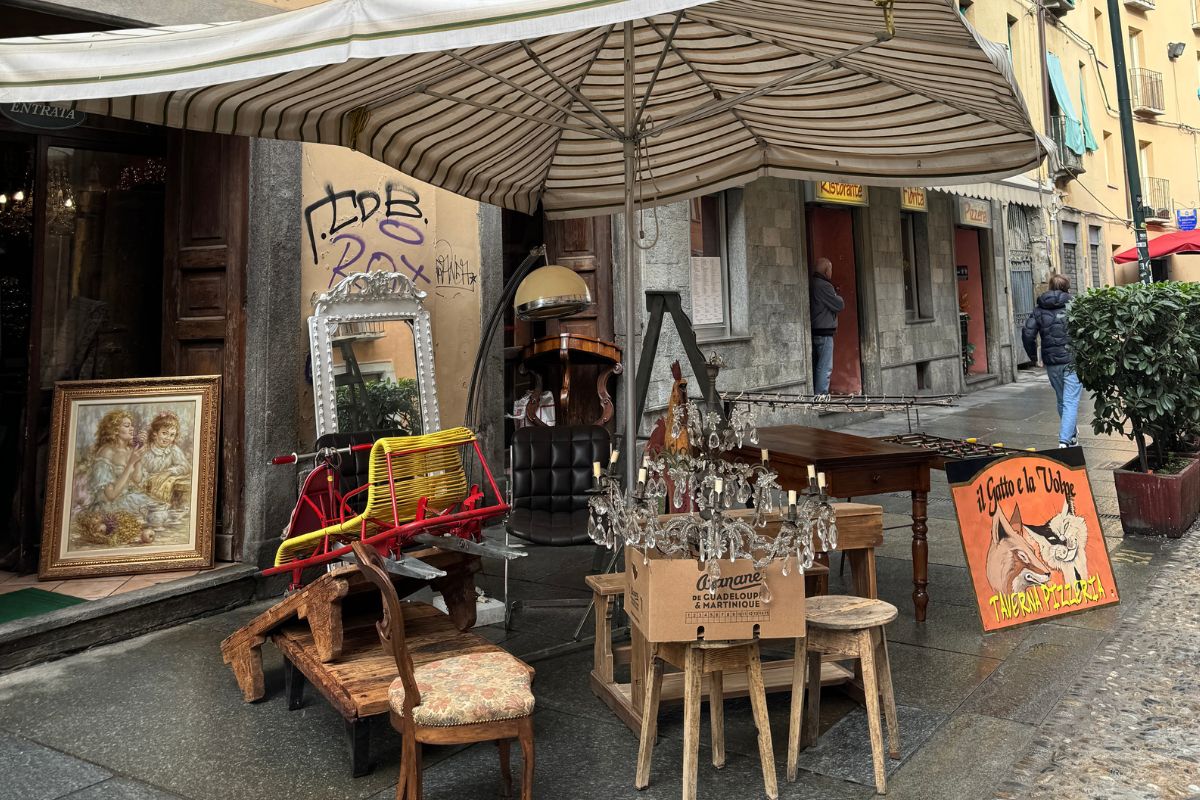
Turin boasts not only a stunning backdrop but also an incredibly convenient location:
- A mere 4-hour drive from Cannes.
- Just a 3-hour drive from Annecy.
- Only 3 hours and 45 minutes from Lyon by car.
While much of the French influence on Turin stems from its history and geographical proximity, Turin stands as a distinctive entity in its own right. It exudes elegance and delight in a manner totally unique to itself. Still, it remains delightfully unexploited by tourism, making it an ideal destination for visitors who can’t decide between visiting France or Italy. After all, why not have both?

